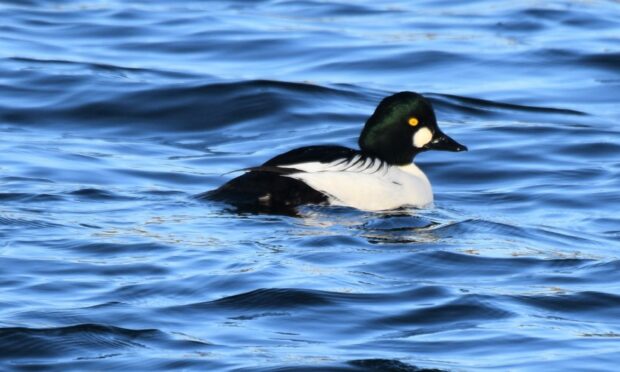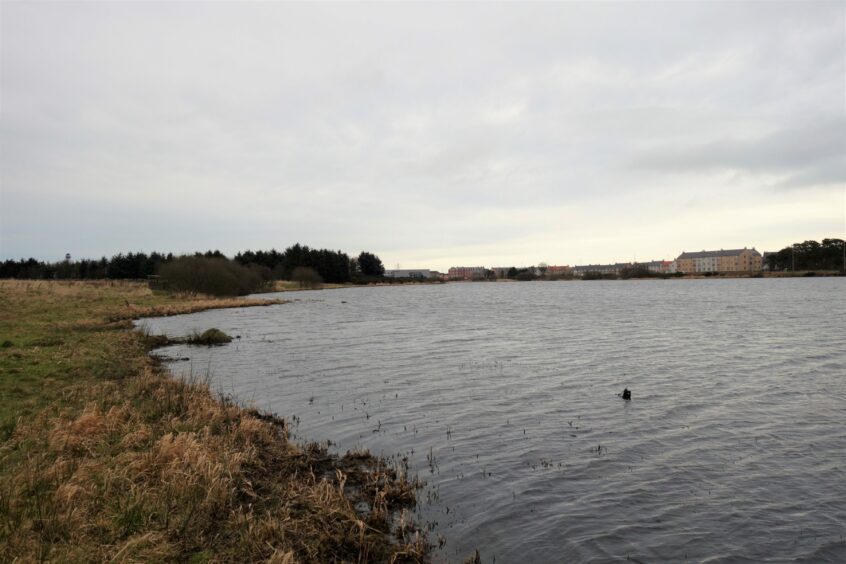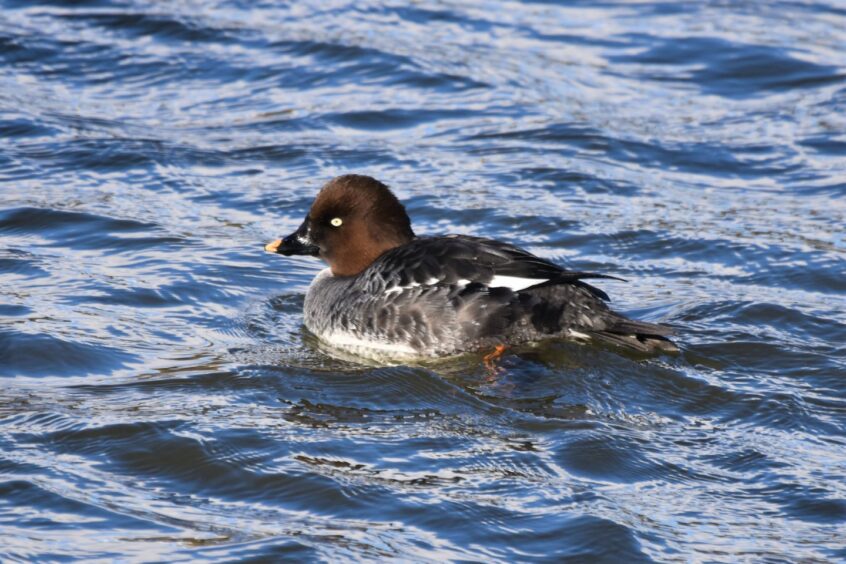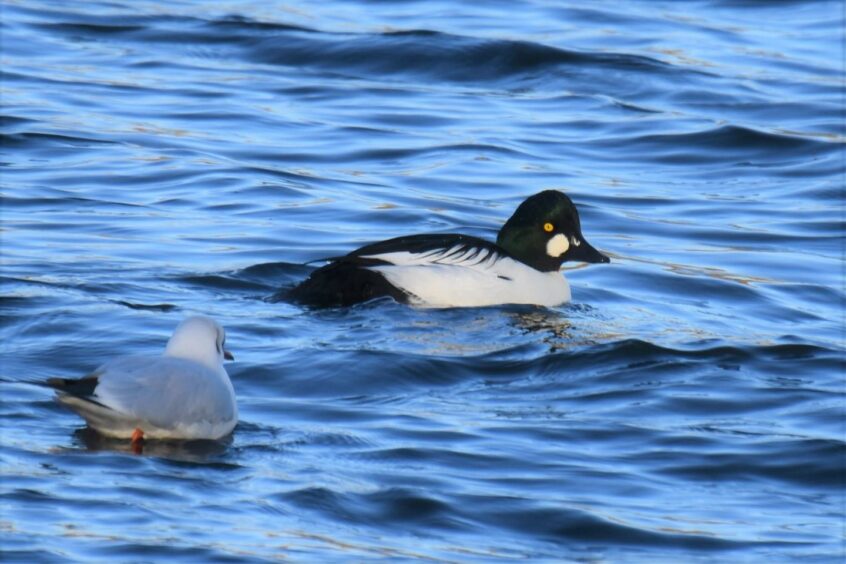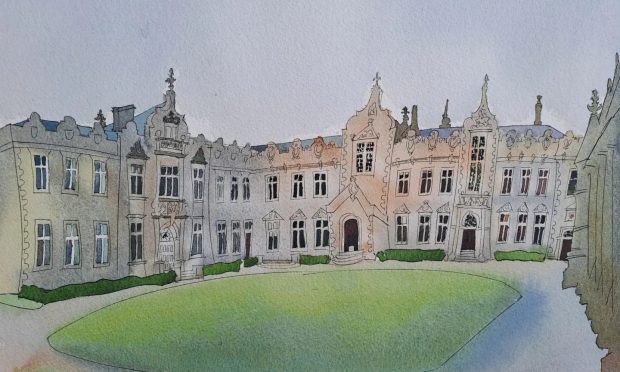The incongruity of the scene was compelling – a cluster of goldeneye ducks that bobbed out on the steely grey water of Loirston Loch, and which were backdropped by the busy Aberdeen harbour approach road.
The rumbling noise of lorries and cars from the A956 dual carriageway that runs close to the suburb of Cove Bay and adjacent to the eastern shore of the loch was all-pervading.
Yet, despite this, there was a wild allure to the loch, and from my vantage point on the opposite bank, I revelled in its natural aura and hungrily breathed-in the cold winter air, which sent my spirits soaring.
Wonderful wildness
These goldeneyes were an integral part this wonderful wildness, and in only a couple of months’ time, they will be heading-off to their breeding grounds in remote forest-fringed lakes and tarns in Scandinavia – so very different from the bustling southern fringes of Aberdeen.
There were both male and female goldeneyes out on the water and I brought one of the drakes under the focus of my binoculars.
He frequently dived under in a rolling fashion to scour the shallow bed of the loch for food.
Goldeneyes are normally shy ducks that often take to the air on whistling wings at the first hint of danger, but this group were relaxed and largely indifferent to my near presence.
The grey winter light was flat, making the drakes appear black and white, although if the sun had been shining bright, the true deep iridescent green of their heads would have sparkled, as would have those deep golden eyes which gives the bird its name.
Eye colour
Why such striking eyes? It appears there is no definitive answer, but there are several theories, including the vibrancy of the eye-colour acting as an indicator of the maturity of a bird and thus its suitability as a potential mate.
These ducks have a most appropriate name and those gleaming eyes an intensity that lingers long in the mind.
As well as the goldeneyes, there were a handful of mallards out on the loch, and a pair of teal that spiralled and swerved low across the water on fast-beating wings.
I lived in Cove Bay for a short while in the 1990s, and I recall one spring seeing a pair of great crested grebes on Loirston Loch displaying to one another.
It was wonderful to see, the male and female facing-up to one other and rapidly shaking and bowing their heads.
The display of grebes often involves the collection of pondweeds in their sharp bills, which are then showed off to each other like some prize trophy.
After scanning Loirston Loch for a final time with my binoculars, I headed back towards my starting point on Redmoss Road, and in the process inadvertently put to flight a large flock of linnets.
They spiralled up into the air like wind-blown confetti before quickly settling down once more, their twittering soon becoming lost amid the background noise of traffic.
